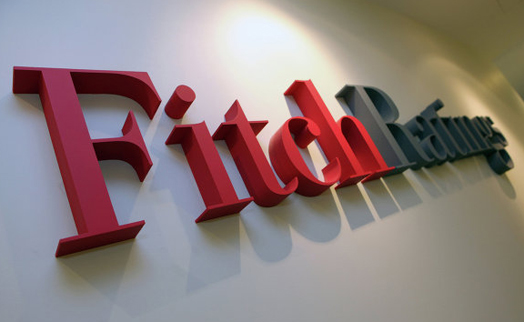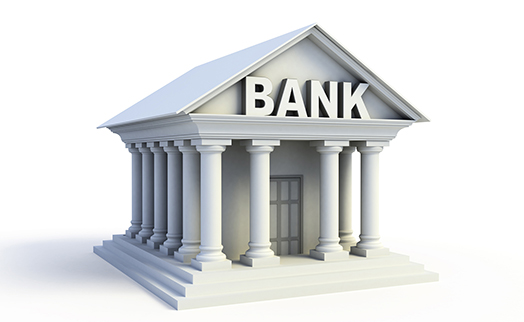YEREVAN, March 29, /ARKA/ The impact of the twin Covid-19 pandemic and conflict shocks saw Armenian government indebtedness reverse its prior downward trend, with general government debt/GDP rising 13.8pp to 67.3% at end-2020, overtaking the current ‘B’ median (63.8%), Fitch Ratings said last week after affirming Armenia’s Long-Term Foreign-Currency (LTFC) Issuer Default Rating (IDR) at ‘B+’ with a Stable Outlook.
‘We forecast debt/GDP to peak at 67.6% at end-2021, before falling gradually to 63.5% by end-2025 as the government re-implements its medium-term fiscal rules and targets to reduce the metric to 60% by end-2026. Weaker growth due to economic scarring from the 2020 shocks and spending pressures to support the economy constrain the potential for faster public debt reduction. Foreign-currency denominated debt represents 77% of public debt (‘B’ median: 61%), increasing the country’s vulnerability to dram depreciation.’
The consolidated fiscal deficit widened to 5.1% of GDP in 2020 (compared with a forecast of 7.6% at our October 2020 review), from 0.8% in 2019, driven by higher expenditure, including to support the economy during the pandemic. A budget amendment in 4Q20 widened the state budget deficit and reallocated spending for the war effort, but under-execution of capital expenditures limited the 2020 deficit outturn. We forecast the consolidated fiscal deficit narrow gradually to 4% in 2021 and 2.8% in 2022, due to a continuation of several fiscal-support measures under the economic recovery plan in 2021, and our expectation of some improvement in capital spending execution.
Potential additional fiscal measures to support a weaker economic recovery is a key risk to our projections. The 2021 deficit will be financed primarily by a USD750 million Eurobond issued in February 2021, with 71% of the annual financing requirement completed by end-February.
Armenia has committed to key structural reforms relating to public financial management under the IMF SBA, including to maintain its medium-term fiscal trajectory, improve revenue mobilisation, fiscal risk management, and efficiency of capital expenditure budgeting and implementation. However, in Fitch’s view, additional recovery spending needs and diminished political support could slow progress of the reform agenda.
External finances are a key weakness for Armenia, with a high commodity export dependence (41% of 2020 current external receipts) that raises vulnerability to copper and precious metal price fluctuations, and fairly weak foreign direct investment (FDI) inflows. Net external debt (NXD) is high, at 55.1% of GDP at end-2020 (‘B’ median of 32.3%) and we forecast it to rise to 62.2% by end-2022.
The authorities’ overall commitment to exchange-rate flexibility resulted in the dram depreciating 9% in 2020. The Central Bank of Armenia maintains its commitment to intervene only to prevent disorderly adjustments in financial markets, making net foreign-exchange (FX) sales of USD147 million in 2020 (2019: net purchases of USD566 million). Broad adherence to the exchange-rate framework under the IMF’s SBA underpins strong access to international financial institutions (IFIs) and external commercial financing.
We estimate the current account balance in 2020 to have remained broadly resilient despite the shocks, improving to a deficit of 4.3% of GDP (2019: deficit 7.2%). This was due to sharp compression of goods and services imports, and a spike in non-resident transfers since 2Q20 driven by large diaspora transfers akin to the increases during the 2008 and 2013 election crises.
Fitch forecasts the current account deficit (CAD) to widen to 6.1% in 2021 and 6.8% in 2022 (‘B’ median average of 4.3%) as private consumption and capital expenditure recover and as anti-crisis diaspora transfers fade, more than offsetting the effect of stronger terms-of-trade from decade-high copper prices. Net FDI inflows are expected to cover only a quarter of the 2021 deficit, with the February 2021 Eurobond and IFI borrowing financing the bulk.
The twin shocks resulted in real GDP contracting 7.6% in 2020 (‘B’ median: 4.5% contraction), with construction and real-estate activities, trade and tourism-related services being worst hit, while public services, healthcare and financial services supported output. Fitch forecasts real GDP growth to rebound to 3.2% in 2021 and 4% in 2022, partly due to base effects and supported by expansionary policy stances, especially in public investments. The ongoing third-wave of Covid-19 infections based on official data is rising above the 2Q20 first wave but still below the peak of the 4Q20 second wave. Despite growing infection rates, and a vaccination programme slower than regional peers’, Fitch does not expect significant economic and travel restrictions to be reinstated.
A credible approach to inflation targeting by the CBA has kept inflation much lower (five-year average: 0.9% in 2020 vs. the historical ‘B’ median of 7.3%) and more stable than peers’. Inflation has picked up in the last three months, rising to 5.3%in February 2021, after averaging 1.2% in 2020, driven by food prices, pass-through from depreciation and rising price expectations. Fitch forecasts near-term inflation to moderate by 2H21 to average 3.5% in 2021, just under the CBA’s 4% target.
In response to rising inflation, the CBA increased its key policy rate by 125bp to 5.5% in two actions between December 2020 and February 2021. Fitch forecasts the CBA to tighten policy further in 2021 to choke off inflation.
Armenian banks are well positioned to weather the impact of the 2020 shocks. The banking system is well capitalised relative to similarly rated peers’ (capital adequacy ratio of 16.6% at end-January 2021), and asset-quality deterioration from the pandemic should rise only slightly from 7.3% (non-performing loans ratio) at end-January 2021, due to the authorities opting for just a brief two-month debt service holiday, while no regulatory forbearance has been applied for problem loan recognition and provisioning.
Banking exposure to the Nagorno-Karabakh conflict region is limited, with loans to the region roughly 3% of GDP (5.3% of bank loans) at end-2019, and the region’s deposits estimated at 1% of GDP or 1.5% of bank liabilities. Government-subsidised lending to banks has helped underpin private-sector credit growth of 18.3% on average in 2020, but which has since moderated to 11.4% in February 2021. Fitch’s macroprudential risk indicator for Armenia is ‘2’, indicating a moderate level of risk due to a positive credit gap in 2019-2020. Residents’ deposit dollarisation is high, at 42.3% at end-2020, in part reflecting sizeable non-resident foreign-currency transfers.
ESG – Governance:
Armenia has an ESG Relevance Score (RS) of 5 for both Political Stability and Rights and for the Rule of Law, Institutional and Regulatory Quality and Control of Corruption, as is the case for all sovereigns. Theses scores reflect the high weight that the World Bank Governance Indicators (WBGI) have in our proprietary Sovereign Rating Model (SRM). Armenia has a medium WBGI ranking at the 48th percentile, reflecting a recent record of peaceful political transitions, a moderate level of rights for participation in the political process, moderate institutional capacity, established rule of law and a moderate level of corruption. -0-








